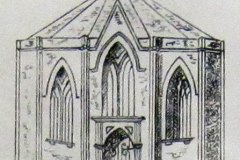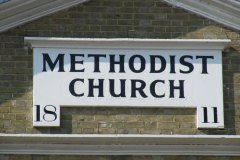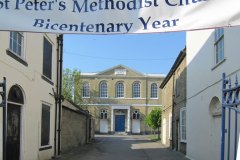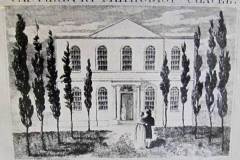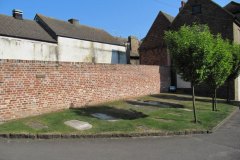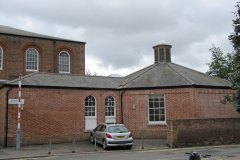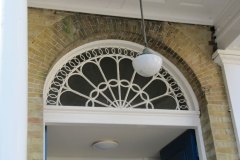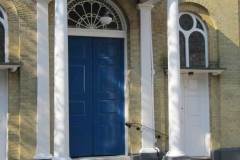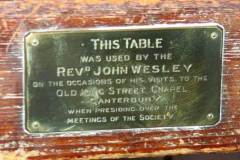St Peter’s Street
Between 1764 and 1811 the Canterbury Methodists met in the unusual 12 sided chapel in King Street (demolished in the 1860s) known variously as the Roundhouse, Pepper Pot or Pepper Box (image 1). This had seating for around 500, and by the early 1800s was clearly too small for the growing Methodist congregation. The result was construction in 1811 of St Peter’s Methodist church (image 2), not to be confused with the nearby St Peter’s parish church. The new church, with seating for over 1000, was designed by William Jenkins, who used as his starting point the City Road chapel in London. It has a simple, classical elegance which denotes the best in Regency architecture. Shops either side of the church entrance (image 3) were built shortly after the church, and the original tree-lined approach (image 4) lost its trees in 1828 to make way for a burial ground (image 5). The tree-lined image appeared on a ‘pew ticket’ – a survival from a period when church funding relied on sale of ‘pew tickets’ to worshippers. Subsequent changes have included the addition of a school room at the rear (1822 extended 1853), changes to the gallery (1956) and addition of a church hall (1966 replaced 2003) which is 8 sided and mimics the design of the Pepper Pot (image 6).
What to see:
- impressive Regency features such as the fanlight above the entrance door (image 7), thin glazing bars on the windows (mostly original), and recessed round-headed windows (Image 8)
- kept in the church, but not always on public show, is the writing table (image 9) thought to be used by John Wesley on his earlier visits to the previous chapel
- monuments in the church include a window dedicated to Thomas Finch Cozens, a stalwart preacher and supporter of the Canterbury Methodists, whose mother had welcomed Wesley when he opened the Pepper Pot chapel in 1764; and also a tablet which mentions a descendant Harold Cozens who died in World War I – the family link to Walter Cozens seems likely but has not yet been established.
Access: open for services and church functions, for musical performances, and otherwise by appointment – web site details below
Sources: documents held by St Peter’s Methodist church (exhibited for the church’s 200 year anniversary celebrations in 2011); see also church web site; also Vickers (1991)
DL

